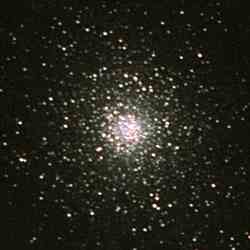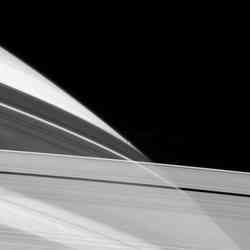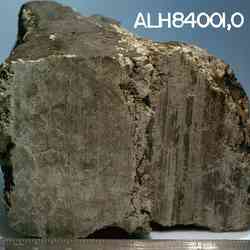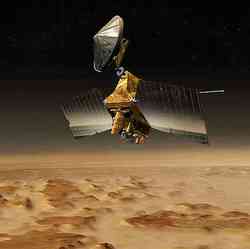
Image credit: Clyde Miller. Click to enlarge

Space and astronomy news

Image credit: Clyde Miller. Click to enlarge
Clyde Miller took this picture of M13 on the 17th May, 2005 from Brantford ON Canada.
Do you have photos you’d like to share? Post them to the Universe Today astrophotography forum or email them to me directly, and I might feature one in Universe Today.
Giacinto Candela and Lino Zivoli took this picture of SN in M51 on the 5th of July, 2005 from Conversano (Bari), Italy.
Do you have photos you’d like to share? Post them to the Bad Astronomy and Universe Today forum or email them to me directly, and I might feature one in Universe Today.
John Kalantzis took this picture of the Moon surface from Volos, Greece. John used Meade SC8″ lxd 55 and LPI (Meade Lunar Planetary Imager camera).
Do you have photos you’d like to share? Post them to the Universe Today astrophotography forum or email them to me directly, and I might feature one in Universe Today.

F ring appears against the planet and above Prometheus. Image credit: NASA/JPL/SSI. Click to enlarge
Cassini peers through the icy particles that comprise Saturn’s rings as Prometheus sits perched on the planet’s limb (edge). The rings cast shadows on the planet, with darker regions corresponding to places where the ring material is denser. The narrow dense regions are created by gravitational resonances with moons, like Prometheus, that orbit near the rings. Prometheus is 102 kilometers (63 miles) across.
The thin, bright core of the F ring can be seen against the planet and above Prometheus.
The image was taken in visible light with the Cassini spacecraft narrow-angle camera on June 3, 2005, at a distance of approximately 2.1 million kilometers (1.3 million miles) from Saturn. The image scale is 13 kilometers (8 miles) per pixel.
The Cassini-Huygens mission is a cooperative project of NASA, the European Space Agency and the Italian Space Agency. The Jet Propulsion Laboratory, a division of the California Institute of Technology in Pasadena, manages the mission for NASA’s Science Mission Directorate, Washington, D.C. The Cassini orbiter and its two onboard cameras were designed, developed and assembled at JPL. The imaging team is based at the Space Science Institute, Boulder, Colo.
For more information about the Cassini-Huygens mission visit http://saturn.jpl.nasa.gov . The Cassini imaging team homepage is at http://ciclops.org .
Original Source: NASA/JPL/SSI News Release

A section of the ALH84001 Mars meteorite. Image credit: NASA/JPL. Click to enlarge
The current mean temperature on the equator of Mars is a blustery -69 degrees Fahrenheit. Scientists have long thought that the Red Planet was once temperate enough for water to have existed on the surface and perhaps for life to have evolved there. But a new study by MIT and Caltech scientists gives this idea the cold shoulder.
In the July 22 issue of the journal Science, MIT Assistant Professor Benjamin Weiss and California Institute of Technology graduate student David Shuster report that their studies of martian meteorites demonstrate that at least several rocks originally located near the surface of Mars have been freezing cold for 4 billion years.
Their work is a novel approach to extracting information on the past climate of Mars through the study of martian meteorites.
In fact, the evidence suggests that during the last 4 billion years, Mars has never been sufficiently warm for liquid water to have flowed on the surface for extended periods of time. Mars therefore has probably never had an environment hospitable to the evolution of life–unless life got started during the first half-billion years of its existence, when the planet was probably warmer.
The work involves two of the seven known “nakhlite” meteorites (named after El Nakhla, Egypt, where the first such meteorite was discovered), and the celebrated ALH84001 meteorite that some scientists believe shows evidence of microbial activity on Mars. Using geochemical techniques, Shuster and Weiss reconstructed a “thermal history” for each of the meteorites to estimate the maximum long-term average temperatures to which they were subjected.
“We looked at meteorites in two ways,” said Weiss, of MIT’s Department of Earth, Atmospheric and Planetary Sciences. “First, we evaluated what the meteorites could have experienced during ejection from Mars, 11-to-15 million years ago, in order to set an upper limit on the temperatures in a worst-case scenario for shock heating.”
They concluded that ALH84001 could never have been heated to a temperature higher than 650 degrees Fahrenheit for even a brief period of time during the last 15 million years. The nakhlites, which show very little evidence of shock damage, were unlikely to have been above the boiling point of water during ejection 11 million years ago.
Those temperatures are still rather high, but the researchers also looked at the rocks’ long-term thermal history on Mars. For this, the scientists estimated the total amount of argon still remaining in the samples using data previously published by two teams at the University of Arizona and NASA’s Johnson Space Center.
Argon gas is present in the meteorites as well as in many rocks on Earth as a natural consequence of the radioactive decay of potassium. As a noble gas, argon is not very chemically reactive, and because the decay rate is precisely known, geologists for years have dated rocks by measuring their argon content.
However, argon is also known to “leak” out of rocks at a temperature-dependent rate. This means that if the argon remaining in the rocks is measured, an inference can be made about the maximum heat to which the rock has been subjected since the argon was first made. The cooler the rock has been, the more argon it will have retained.
Shuster and Weiss’s analysis found that only a tiny fraction of the argon that was originally produced in the meteorite samples has been lost through the eons. “The small amount of argon loss that has apparently taken place in these meteorites is remarkable. Any way we look at it, these rocks have been cold for a very long time,” says Shuster. Their calculations suggest that the martian surface has been in a deep freeze for most of the last 4 billion years.
“The temperature histories of these two planets are truly different. On Earth, you couldn’t find a single rock that has been below even room temperature for that long,” says Shuster. The ALH84001 meteorite, in fact, couldn’t have been above freezing for more than a million years during the last 3.5 billion years of history.
“Our research doesn’t mean that there weren’t pockets of isolated water in geothermal springs for long periods of time, but suggests instead that there haven’t been large areas of freestanding water for 4 billion years.
“Our results seem to imply that surface features indicating the presence and flow of liquid water formed over relatively short time periods,” says Shuster.
On a positive note for astrobiology, however, Weiss says the new study does nothing to disprove the theory of “panspermia,” which holds that life can jump from one planet to another by meteorites. While at Caltech as a graduate student several years ago, Weiss and his supervising professor, Joseph Kirschvink, showed that microbes could indeed have traveled from Mars to Earth in the hairline fractures of ALH84001 without being destroyed by heat. In particular, the fact that the nakhlites have never been heated above about 200 degrees Fahrenheit means that they were not heat-sterilized during ejection from Mars and transfer to Earth.
This work was sponsored by NASA and the National Science Foundation.
Original Source: MIT News Release

Artist’s concept of Mars Reconnaissance Orbiter. Image credit: NASA/JPL. Click to enlarge
NASA’s next mission to Mars will examine the red planet in unprecedented detail from low orbit and provide more data about the intriguing planet than all previous missions combined. The Mars Reconnaissance Orbiter and its launch vehicle are nearing final stages of preparation at NASA’s Kennedy Space Center, Fla., for a launch opportunity that begins Aug. 10.
The spacecraft will examine Martian features ranging from the top of the atmosphere to underground layering. Researchers will use it to study the history and distribution of Martian water. It will also support future Mars missions by characterizing landing sites and providing a high-data-rate communications relay.
“Mars Reconnaissance Orbiter is the next step in our ambitious exploration of Mars,” said NASA’s director, Mars Exploration Program, Science Mission Directorate, Douglas McCuistion. “We expect to use this spacecraft’s eyes in the sky in coming years as our primary tools to identify and evaluate the best places for future missions to land.”
The spacecraft carries six instruments for probing the atmosphere, surface and subsurface to characterize the planet and how it changed over time. One of the science payload’s three cameras will be the largest-diameter telescopic camera ever sent to another planet. It will reveal rocks and layers as small as the width of an office desk. Another camera will expand the present area of high-resolution coverage by a factor of 10. A third will provide global maps of Martian weather.
The other three instruments are a spectrometer for identifying water-related minerals in patches as small as a baseball infield; a ground-penetrating radar, supplied by the Italian Space Agency, to peer beneath the surface for layers or rock, ice and, if present, water; and a radiometer to monitor atmospheric dust, water vapor and temperature.
Two additional scientific investigations will analyze the motion of the spacecraft in orbit to study the structure of the upper atmosphere and the Martian gravity field.
“We will keep pursuing a follow-the-water strategy with Mars Reconnaissance Orbiter,” said Dr. Michael Meyer, Mars exploration chief scientist at NASA Headquarters. “Dramatic discoveries by Mars Global Surveyor, Mars Odyssey and the Mars Exploration Rovers about recent gullies, near-surface permafrost and ancient surface water have given us a new Mars in the past few years. Learning more about what has happened to the water will focus searches for possible Martian life, past or present.”
Dr. Richard Zurek of NASA’s Jet Propulsion Laboratory, Pasadena, Calif., project scientist for the orbiter, said, “Higher resolution is a major driver for this mission. Every time we look with increased resolution, Mars has said, ‘Here’s something you didn’t expect. You don’t understand me yet.’ We’re sure to find surprises.”
The orbiter will reach Mars in March 2006. It will gradually adjust the shape of its orbit by aerobraking, a technique that uses the friction of careful dips into the planet’s upper atmosphere. For the mission’s 25-month primary science phase, beginning in November 2006, the planned orbit averages about 190 miles above the surface, more than 20 percent lower than the average for any of the three current Mars orbiters. The lower orbit adds to the ability to see Mars as it has never been seen before.
To get information from its instruments to Earth, the orbiter carries the biggest antenna ever sent to Mars and a transmitter powered by large solar panels. “It can send 10 times as much data per minute as any previous Mars spacecraft,” said JPL’s James Graf, project manager. “This increased return multiplies the value of the instruments by permitting increased coverage of the surface at higher resolution than ever before. The same telecommunications gear will be used to relay critical science data to Earth from landers.”
To loft so big a spacecraft, weighing more than two tons fully fueled, NASA will use a powerful Atlas V launch vehicle for the first time on an interplanetary mission.
The mission is managed by JPL, a division of the California Institute of Technology, Pasadena, for the NASA Science Mission Directorate. Lockheed Martin Space Systems, Denver, is the prime contractor for the project and built the spacecraft.
For information about Mars Reconnaissance Orbiter on the Web, visit http://www.nasa.gov/mro
Original Source: NASA News Release
Leonard E. Mercer took this image of Jupiter with Callisto Transit. Also Europa, Callisto, Ganymede & Io are visible in this image, from left to right. Leonard took this picture on the 22th of June 2005 using Nexstar 8i SE with Meade DSI.
Do you have photos you’d like to share? Post them to the Universe Today astrophotography forum or email them to me directly, and I might feature one in Universe Today.
Astrophotographer Tom Orff took this Moon picture of the three major lunar craters; Theophilus, Cyrillus and Catharina, on the 28th April 2001 from Shenandoah PA, USA. Image was acquired with a Starlight Xpress MX516 CCD camera and an 8″ Celestron Starhopper Dobsonian with a Dob Driver II at 3x prime focus (3600mm focal length (at f/18) with a TeleVue 3x barlow).
Do you have photos you’d like to share? Post them to the Universe Today astrophotography forum or email them to me directly, and I might feature one in Universe Today.
Monty Leventhal took this filtergram of the Sun on the 14th July from Sydney, Australia. Monty used a 10″ Meade S.C. 2500m and Olympus OM1 camera.
Do you have photos you’d like to share? Post them to the Universe Today astrophotography forum or email them to me directly, and I might feature one in Universe Today.